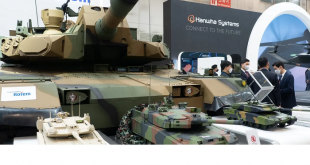Advocates of higher military spending often say its to ‘support the troops.’ Not exactly.
Advocates of ever-higher Pentagon spending frequently argue that we must throw more money at the department to “support the troops.” But recent budget proposals and a new research paper issued by the Quincy Institute and the Costs of War Project at Brown University suggest otherwise.
The paper, which I co-authored with Stephen Semler, found that 54% of the Pentagon’s $4.4 trillion in discretionary spending from 2020 to 2024 went to military contractors. The top five alone — Lockheed Martin ($313 billion), RTX (formerly Raytheon, $145 billion), Boeing ($115 billion), General Dynamics ($116 billion), and Northrop Grumman ($81 billion) – received $771 billion in Pentagon contracts over that five year period.
This huge infusion of funds to arms makers comes at the expense of benefits for active duty personnel and veterans of America’s post-9/11 wars. Despite pay increases in recent years, there are still hundreds of thousands of military families who rely on food stamps, live in subpar housing, or suffer from other financial hardships.
Meanwhile, there are plans to cut tens of thousands of personnel at the Veterans Administration, close Veterans health centers, and even to reduce staffing at veteran suicide hotlines. And many of the programs veterans and their families depend on — from food stamps to Medicaid and more — are slated for sharp cuts in the budget bill signed by President Trump earlier this month.
It would be one thing if all of the hundreds of billions of dollars lavished on weapons contractors were being well spent in service of a better defense. But they are not. Overpriced and underperforming weapons systems like the F-35 combat aircraft and the Sentinel intercontinental ballistic missile (ICBM) have shown themselves to be quite effective at consuming taxpayer dollars, even as the run huge cost overruns, suffer lengthy schedule delays, and, in the case of the F-35, are unavailable for use much of the time due to serious maintenance problems.
The problems with the Sentinel and the F-35 are likely to pale in comparison with the sums that may be wasted in pursuit of President Trump’s proposal for a leak-proof “Golden Dome” missile defense system, a costly pipe dream that many experts feel is both physically impossible and strategically unwise. In the more than four decades and hundreds of billions of dollars spent since Ronald Reagan’s pledge to build an impenetrable shield against incoming ICBMs, the Pentagon has yet to succeed in a test conducted under realistic conditions, and has even failed in a large number of the carefully scripted efforts.
And Golden Dome is more ambitious than Star Wars — it is supposed to intercept not just ICBMs, but hypersonic missiles, low-flying drones, and anything else that might be launched at the United States.
The good news is that if you are a weapons contractor, whether from the Big Five or the emerging military tech sector in Silicon Valley, Golden Dome will be a gold mine, regardless of whether it ever produces a useful defense system.
 Tehran Institute For International Studies tiis
Tehran Institute For International Studies tiis



